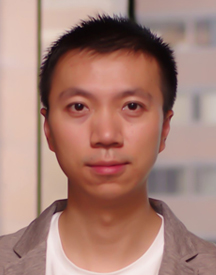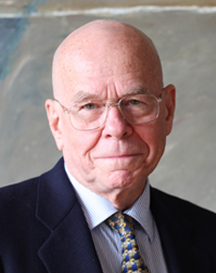Two New Grants Fund Exploration of 'Click Chemistry' Applications
By Madeline McCurry-Schmidt
Scientists at The Scripps Research Institute (TSRI) have received a grant of nearly $1.9 million from the National Institutes of Health’s National Institute of General Medical Sciences (NIGMS) and a grant of $640,000 from the National Science Foundation (NSF) for two new projects that take advantage of "click chemistry."
Created in the mid-1990s by TSRI Professor K. Barry Sharpless, a Nobel Laureate in Chemistry, click chemistry is a method for the rapid discovery of new chemical properties by reliably "clicking" molecules together.
The NIGMS grant will support a new four-year project led by TSRI Associate Professor Peng Wu to study the role of “fucosylated” sugar molecules in cancer.
Fucosylation is adding fucose, a natural sugar, to molecules like glycans, one of the four fundamental building blocks of life. Fucosylation changes how tumors behave. Scientists have found that fucosylated glycans in tumors seem to block the body’s ability to destroy cancer cells. However, the underlying mechanism remains a mystery.
“If we can understand how cancer cells use fucosylated glycans to fool the immune system,” said Wu, “then we hope we can learn from it, too, and create new immunotherapies—for example, strategies to deliver cytotoxic T cells or antibodies specifically to tumors based on their fucosylation levels.”
The new project will include the use of click chemistry-based tools to label cell surface glycans.
“This chemistry developed at Scripps can contribute to understanding biology and also to finding new biological products,” said Wu.
The NSF grant will support a four-year project led by Sharpless to create new clicked polymers using SuFEx, a sulfur fluoride exchange reaction discovered by Sharpless and colleagues in 2014.
“SuFEx is revealing unique reactivity,” said Sharpless. “It is the second, near-perfect click reaction discovered in our laboratory. CuAAC (rhymes with ‘quack’) was first. Used in tandem, SuFEx and CuAAC have found new chemical universes that may be as large as nature's chemistry. The potential is staggering."
Sharpless will work with Wu to develop polymers with better properties than today's ubiquitous polycarbonate-based materials. Sharpless said new polymers might include flexible electronics, hybrid nanocomposites, bioplastics and smart coatings. "Imagine," he said, "windows that wash themselves, clothes you can clean with polymer beads instead of soap, or plastic automobile bodies."
The number of the NIGMS grant is R01GM093282. The number of the NSF grant is 1610987.
Send comments to: press[at]scripps.edu















